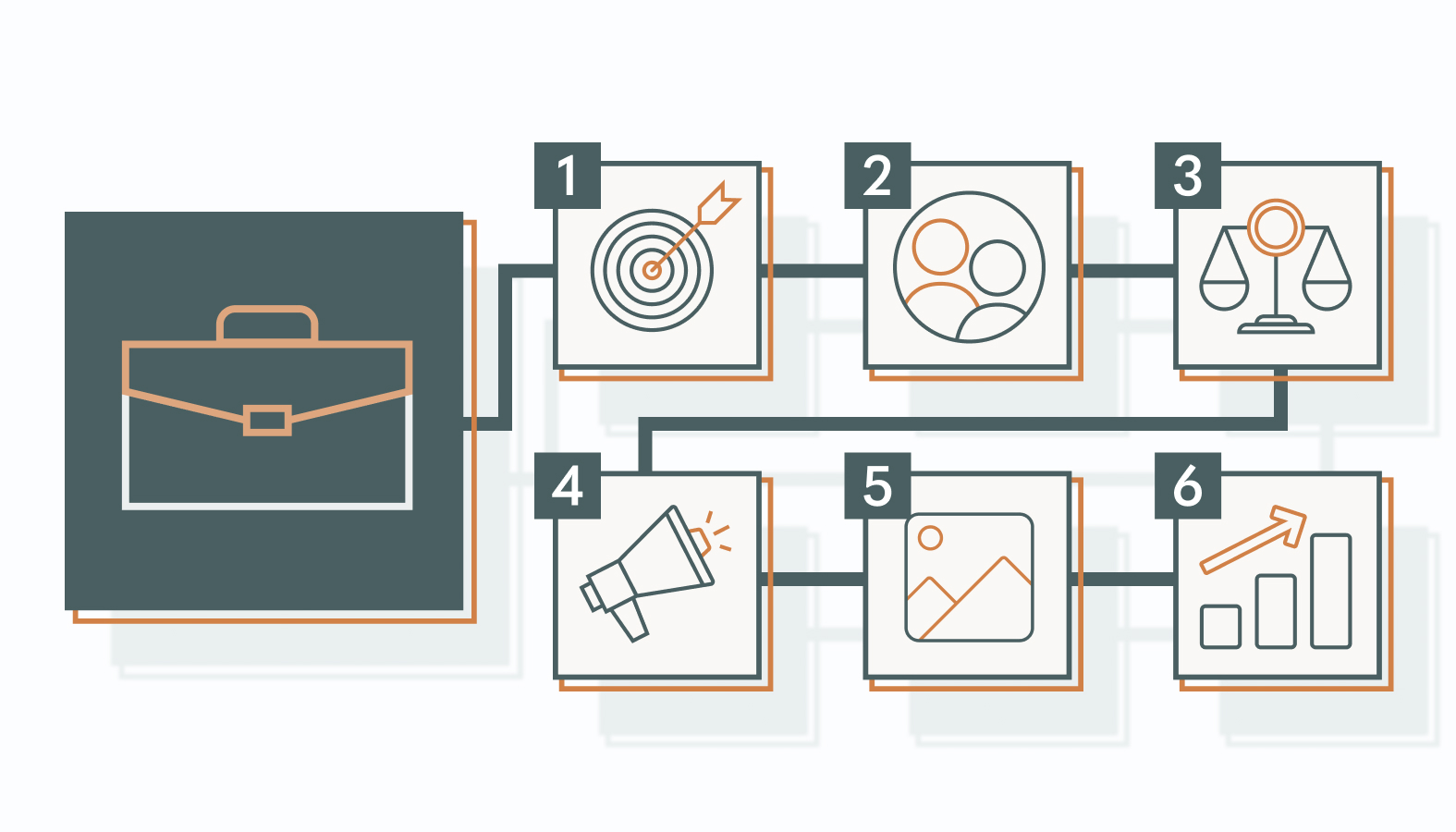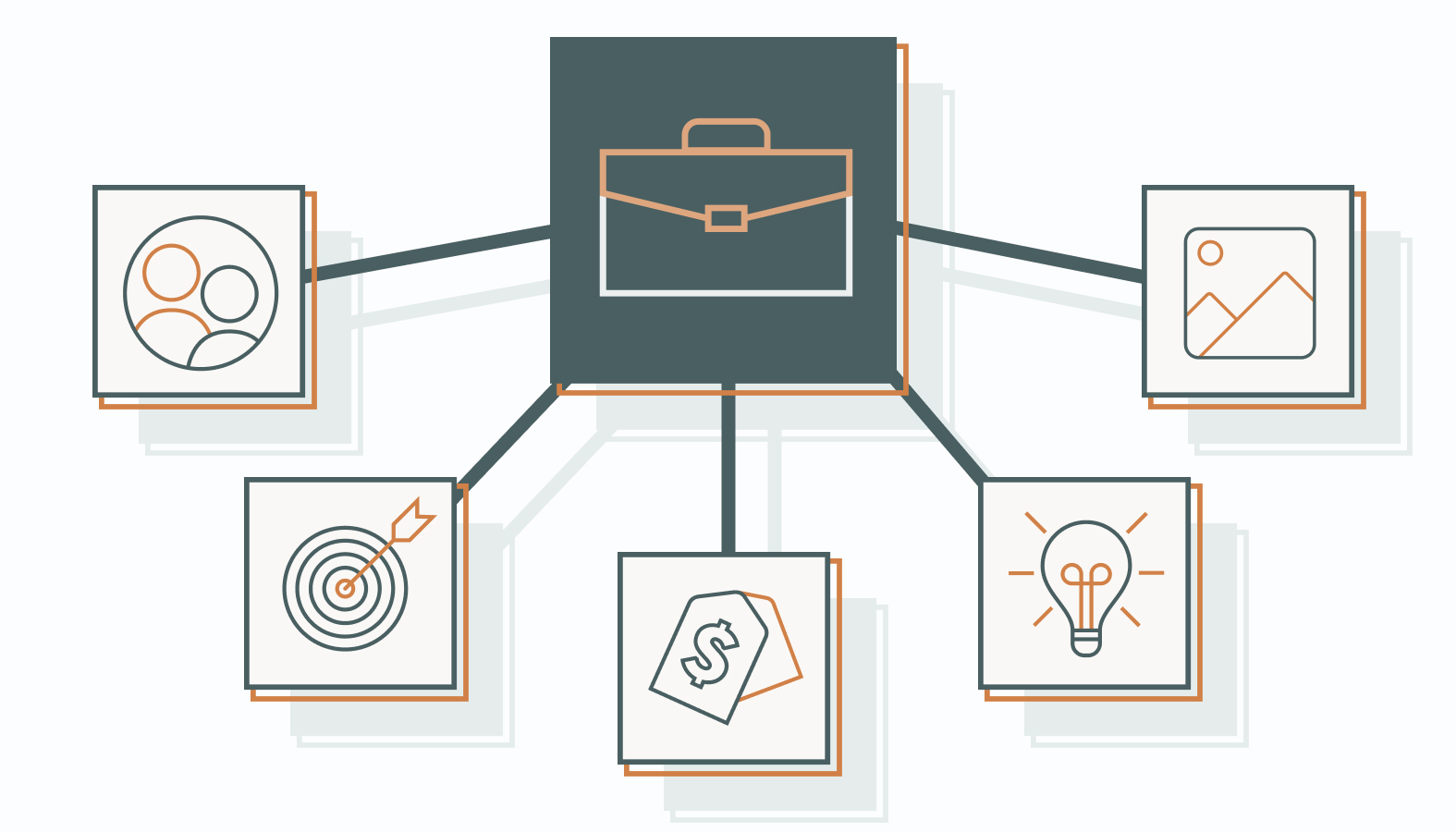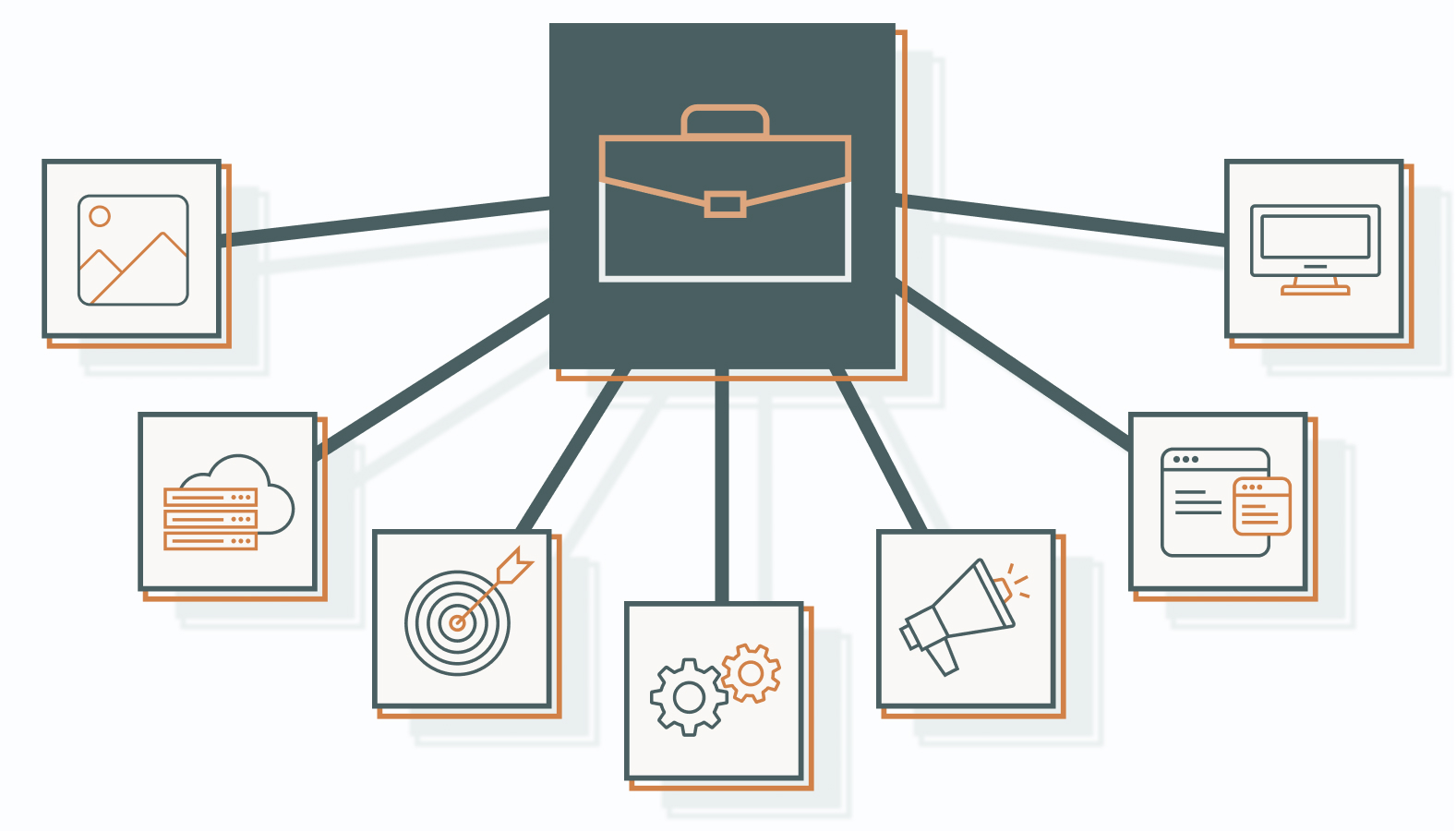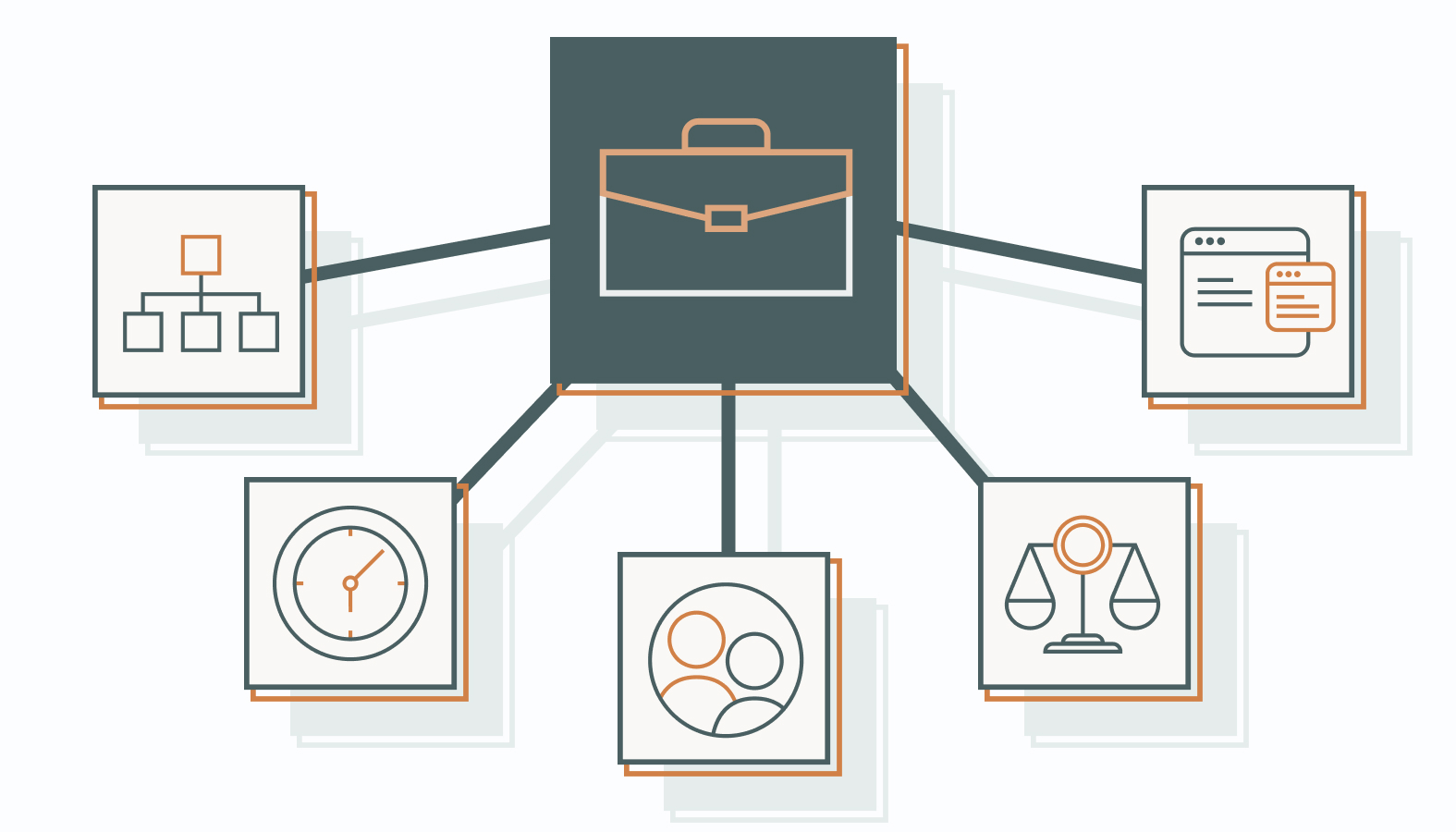B2B marketing may seem daunting, but it’s an adventure worth embarking on. Whether you’re transitioning from B2C, managing a business, or spearheading your company’s marketing efforts, this guide will simplify the journey for you.
What Is B2B Marketing?
Imagine you’re a lemonade stand owner selling lemonade to passersby – that’s B2C marketing. But if you start selling lemons to other lemonade stands so they can make their own drinks, that’s B2B marketing. It’s businesses selling to other businesses. Instead of serving drinks to people, you’re providing the ingredients for another business to use.
As we move through 2024, the concept of B2B marketing extends beyond mere transactions; it’s about sparking meaningful conversations, making connections, and building long-term partnerships. This marketing approach helps businesses grow in an economy that’s becoming more digital.
B2B vs. B2C Marketing: What’s the Difference?
While B2B and B2C marketing shares the common goal of connecting products or services with those who need them, they do this differently. Let’s look at what makes them different.
Marketing Goals
Every marketing journey begins with a destination in mind. The goals of B2C and B2B marketing guide each approach, shaping the routes marketers take in each space.
B2B
In B2B marketing, the goal is to build relationships that will be valuable in the long run. It’s not about making a quick sale; it’s about earning trust and a good reputation since most buyers want to make choices that are good for their business’s finances and often prefer to shop with a sales rep.
B2C
Conversely, in B2C marketing, the aim is to quickly engage with customers and make sales. Marketers try to connect with consumers’ emotions to make them loyal to and recognize the brand, which can lead to quick purchase decisions. Making an emotional connection and telling a compelling brand story is key here.
Purchase Decision-Making Process
The decision-making process is like a map that shows how purchases come to be. This process varies in B2B and B2C marketing. It can be more complex and take longer for businesses, which affects how marketers develop and deploy their strategies.
B2B
B2B buyers take their time before making a purchase, with many people involved and lots of thinking about the benefits, potential ROI, long-term value, and how the product will be used. Here, the B2B marketers’ focus is on building a slow and steady relationship with potential customers.
B2C
For B2C sales, customers often act on impulse or emotion, with personal taste and immediate need driving their quick decisions. Marketers in this sector are attentive to trends and changes in consumer behavior to capture their interest quickly.
Purchase Motivation
The reasons people decide to buy things are what drive sales. In B2B and B2C, these reasons can be different, and they affect how marketers sell their products and tailor their messages.
B2B
In the B2B sector, businesses seek out products or services for practical reasons, such as to make work easier, be more efficient, or get a strong return on investment. They’re also careful about risks because their choice can affect the entire B2B organization.
B2C
In B2C, people buy based on what they want or to feel good. Emotions often matter more than practical reasons. Buyers are influenced by how a product fits their identity or lifestyle, and marketers focus on creating relatable and inspirational brand stories.
People Involved in Purchase
Knowing who makes the buying decisions is critical. In B2B and B2C transactions, the people involved and their roles in the buying process are quite distinct.
B2B
In B2B, decisions are often made by a group of stakeholders, each with their own expertise and interests. Marketers need to build strong relationships and communicate in ways that resonate with these professionals.
B2C
In B2C sales, the individual buyer decides on their own. Marketers must craft messages that resonate on a personal level, often appealing to emotions, personal experiences, or desires to influence their decisions.
Purchase Purpose
The reason for a purchase depends on its purpose. B2B and B2C purchases serve different ends, and recognizing this helps marketers align their strategies with potential customers’ needs.
B2B
In B2B transactions, the purpose is often strategic and operational. Businesses choose B2B products or services to resolve specific challenges, improve processes, or reach broader organizational goals. Each purchase is carefully chosen to help the business improve or beat the competition.
B2C
Meanwhile, B2C buyers purchase things for various personal purposes, like satisfying immediate needs, indulging in luxuries, or even expressing their personality through brand choices. Marketers need to understand and appeal to these varied intents and create plans that resonate with different consumer motivations.
B2B Marketing Examples
B2B marketing has many tactics and strategies you can use, all aimed at connecting with other businesses. Let’s look at some examples.
Email Marketing
Despite rumors of its demise, email marketing remains effective for B2B companies. It’s not just about sending messages; it’s about keeping conversations going and sharing stories that matter to businesses.
For every $1 spent on email marketing, companies can earn $42 on average, according to research. L’Occitane, for example, achieved a 14% response rate to its Black Friday campaigns by sending targeted and personalized emails.
Content Marketing
For B2B, content marketing is like telling a story to educate and build trust from the audience. Microsoft and Rockwell Automation teamed up on a campaign that shared a series of storytelling articles about customer success. This helped both companies become recognized as leaders and improved their customer engagement.
Social Media Marketing
Social media is where B2B marketers can engage in conversations and build communities. It’s important to choose a social platform most frequented by potential clients for meaningful interactions.
For instance, Cisco made content for social media platforms where IT decision-makers spend their time, resulting in deeper engagement and increased lead generation.
Search Engine Optimization (SEO)
SEO helps potential clients find a business’s website more easily. Making a website more SEO-friendly can increase the number of potential customers, with a reported 14% of SEO leads ending in a sale. HubSpot uses SEO to enhance its visibility and now gets substantial organic traffic to its website through search engines.
Trade Shows and Events
Trade shows and events are like big social gatherings in the B2B world, where making a good impression and meeting the right people can lead to business opportunities. These events work best when combined with strategic marketing and advertising efforts.
Salesforce’s annual Dreamforce conference is an example. It attracts thousands of attendees and generates extensive leads through a strong promotional campaign before, during, and after the event.
Account-Based Marketing (ABM)
In ABM, you focus on specific, high-value potential clients with messages made just for them. It’s very effective, especially for selling expensive products or in niche markets.
A testament to this is ITSMA’s report, which reveals that 87% of marketers measuring ROI say ABM outperforms every other marketing investment. One ABM success story is the IT firm Avanade, which credited this approach for a 200% increase in targeted accounts’ average deal size.
Direct Mail Campaigns
Direct mail campaigns in B2B marketing add a physical touch to the mostly digital marketing world. They help businesses stand out, initiate personalized communication, and increase brand awareness.
For example, the company PFL used direct mail with digital platforms and increased customer response rates by over 300%.
These examples show the different ways B2B marketing can work and how its strategic implementation can be very effective. Whether through digital or traditional channels, the main goal of B2B marketing is to create meaningful connections with other businesses and deliver value that meets their needs and goals.
Breaking Down the Business-to-Business Marketing Process
Crafting a successful B2B marketing plan needs careful planning, a clear plan, and the flexibility to adapt to changes in the business.
We’ve outlined the main steps of this process, but it’s the small, specific details that determine a campaign’s success.
Step 1: Start With a Goal in Mind and Build Around That Goal
Start by setting a clear goal for your marketing, like getting more leads, making more sales, or getting more people to know your brand. Make a comprehensive plan with specific targets and ensure every marketing effort is aimed at reaching these goals.
Step 2: Figure Out Who Your Customers Are
Know who your target audience is. This means learning their language, understanding their challenges, and knowing what they’re looking for. Do your research to create detailed buyer personas and segment your audience to tailor your messaging effectively. The more you understand the businesses you aim to serve, the better your marketing can be.
Step 3: Align Your Brand & Messaging With Your Audience
Make sure your brand and messaging align with your market’s wants and needs. Work on your brand’s voice and messages to ensure they resonate with your target audience. Putting efforts into this helps improve all the marketing you do afterward.
Step 4: Choose How to Advertise
With several tactics and channels at your disposal, as referenced in the “Examples” section above, selecting the most effective marketing method to advertise is crucial.
Where is your target audience most engaged?
Knowing where your audience is most active and engaged guides your choices.
Is that marketing platform aligned with your values and brand personality?
Ensure the platform resonates with your brand’s core values and personality to maintain authenticity.
How can you stand out on platforms popular with your audience?
Distinguishing yourself on a popular platform can be more fruitful than seeking untapped B2B spaces.
Can you afford to advertise on these platforms you’ve identified?
Cost is a crucial consideration. Dominant industry players often set platform prices, which may be steep for startups or smaller businesses.
If you can’t afford the platforms most popular with your audience…
Then it’s time to get creative and use technology to find other ways to reach your audience effectively without spending too much money.
Step 5: Create Assets and Start Promoting
Now, with your goals set and your course plotted, make your marketing materials, such as blog posts, emails, videos, and social media content. You’ll use these marketing tools to spread the word about your brand and get potential clients interested.
Step 6: Closely Track Campaign Analytics and Improve
Watch how your B2B marketing campaign is doing. Monitoring the results allows you to see what’s working, what’s not, and what can be improved. Use the marketing data you collect to keep improving your marketing strategy.
Creating an Effective B2B Marketing Strategy
To do well in B2B marketing, you need a clear and detailed marketing plan. This guides you to where you want to go and helps you anticipate the challenges and opportunities that lie ahead. Your plan should be based on a deep understanding of the market, have clear objectives, and know how to deliver value to potential customers.
Check how many people might like your product.
Before you start planning your marketing, you need to know the size of the territory you’re navigating. Assessing the total addressable market (TAM) gives you a clear idea of your potential customer base and helps you understand the breadth of your market opportunity.
Estimating your TAM involves analyzing B2B industry reports, existing customer data, and market trends. This is crucial as it influences your product development, sales forecasting, and marketing strategies.
Figure out what you want to achieve.
Setting your goals in your B2B marketing plan means deciding what you want your business to accomplish. Make goals that are specific, measurable, achievable, relevant, and time-bound (SMART).
Whether it’s increasing lead generation by a certain percentage or establishing thought leadership in your sector, these goals should align with your company’s broader objectives and be the benchmark of your marketing campaign’s performance.
Explain why your product is valuable.
In B2B, your product or service’s value shows the unique benefits that make your offering stand out. Communicating this value clearly and compellingly can attract and retain B2B customers. Focus on how your product solves problems or adds value to customers’ operations and make sure this messaging is part of all your marketing content.
Make a plan to connect with potential customers.
This phase is where you turn your map into an actionable route. Plan how to reach your potential customers by choosing the right B2B marketing channels, crafting targeted projects, and making sure your sales and marketing teams work together. Use email marketing, social media, or direct outreach and ensure they all help meet your marketing objectives and get your message to the right people at the right time.
Make things like articles or videos to share with your audience.
In today’s B2B marketing climate, content is more than just king – it’s the currency of engagement. Creating informative articles, insightful videos, and other valuable content is essential to educate and engage your target audience. This content should not only show your expertise but also provide tangible value to your prospects.
Remember, you must give generously – information, insights, support – before you can expect anything in return.
B2B Marketing Trends Today
In B2B marketing, you need to stay updated with new trends and technologies. As we go through 2024, some trends are making waves, changing how businesses interact.
Let’s explore what’s popular now in B2B marketing and how it can reshape your B2B strategies moving forward.
Embracing Visual Content and Brand Identity
Using pictures, videos, and design helps capture and retain the attention of business clients. It’s not just about aesthetics; it’s helpful for explaining complex information in a clear, lasting way. Establishing a strong brand identity with consistent visual elements can significantly impact your brand recognition and make your business stand out among others.
Experimentation and Intelligent Data Management
In B2B marketing, experimentation is the catalyst for innovation, and data is the cornerstone of knowledge. Trying new marketing tactics and analyzing the resulting data feeds the cycle of continuous improvement. This leads to more informed decisions and refined strategies.
Personalization Strategies for B2B Marketing
The power of personalization in B2B marketing can’t be overstated. Tailoring content and communication to the needs and interests of your audience resonates on a deeper level, fostering a sense of understanding and connection that generic messaging can never achieve.
AI and Automation Integration
AI and automation are revolutionizing B2B marketing by offering unprecedented analytical abilities and efficiency gains. By automating repetitive tasks and personalizing at scale, these technologies allow marketers to focus on strategy and creative engagement with their audiences.
Sustainable and Ethical Marketing Practices
Sustainability and ethics have moved to the forefront of business priorities, with B2B brands increasingly adopting eco-friendly practices and ethical standards. Companies that transparently communicate their commitment to these values often see a boost in their reputation and relationships.
Interactive and Engaging Content Strategies
Interactive content is reshaping engagement by offering immersive experiences that actively involve the audience. From quizzes and games to clickable infographics, interactive elements can significantly boost engagement and information retention among B2B audiences.
New Technology Adaptation
Adapting to new technologies isn’t just an advantage; it’s a necessity for staying relevant in B2B marketing. Companies that successfully integrate new technologies into their strategies not only stand out but also streamline their operations and create more impactful, data-driven marketing activities.
Overcoming Potential Challenges in B2B Marketing
In B2B marketing, several challenges can impede a brand’s success. Recognizing these potential hurdles is the first step to developing strategies that can avoid these challenges or turn them into opportunities for growth and engagement.
Complex Decision-Making Processes
B2B buying decisions can be very complicated. Brands must focus on creating a message that stands out and clearly differentiates them from the competition. Experimentation and innovation in delivering value are vital to captivate and influence the people who are deciding if they’ll buy.
Long Sales Cycles
B2B sales often take a long time and involve many steps. It’s important to ensure ongoing engagement and value delivery at each step. Tailoring interactions based on lead behavior and progression keeps your brand top of mind and smoothly guides potential customers to conversion.
Reaching the Right Audience
When B2B advertising on premium platforms is too expensive, particularly for startups or small companies, they need to be creative and use tech wisely. They can engage on more budget-friendly platforms and use targeted, cost-effective marketing strategies, to still reach their audience without breaking the bank.
Building Trust and Credibility
Trust and credibility are the foundations upon which successful B2B relationships are built. Offering a strong and consistent brand experience, along with real value and knowledge, helps build a good reputation and earn the trust of potential customers.
Effective Content Marketing
Timely and relevant content is key in various B2B marketing. When you give information that addresses the needs and questions of your audience when they decide to buy, you show that your brand is knowledgeable and helpful, which earns their trust.
To handle these challenges, you need a smart plan, a deep understanding of your audience, and the flexibility to adjust tactics as markets evolve. By addressing these issues head-on and in creative ways, B2B marketers can build stronger, more effective initiatives that drive results and establish lasting business relationships.
Your Next Steps in B2B Marketing
Navigating B2B marketing can be as challenging as it is thrilling. With the right mix of traditional methods and new strategies, your business can adapt and grow in today’s competitive B2B climate.
We know that every business has its unique story and challenges. If you’re unsure about your next marketing move or have questions this guide has sparked, we’re here to lend a friendly ear.
Schedule a candid conversation with us, and we’ll help you see things clearly and confidently make choices for your business’s future.











